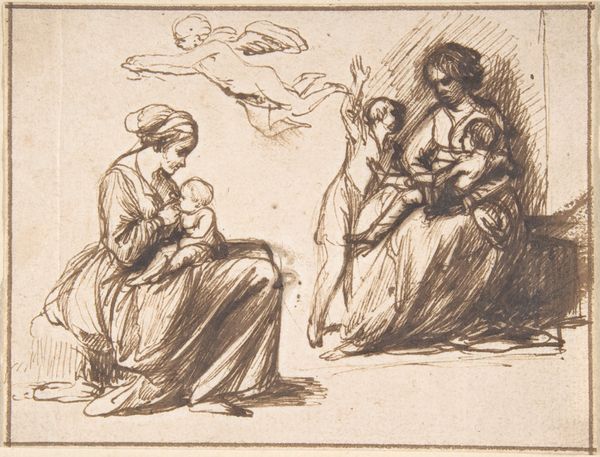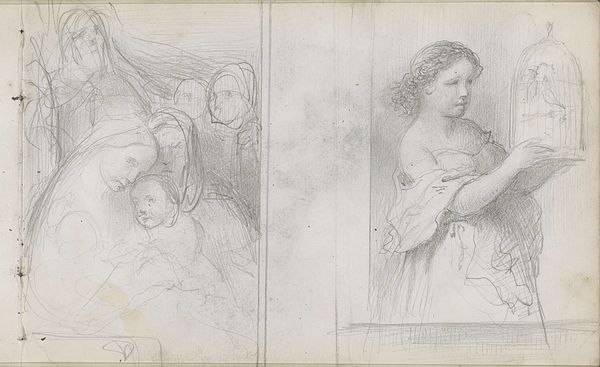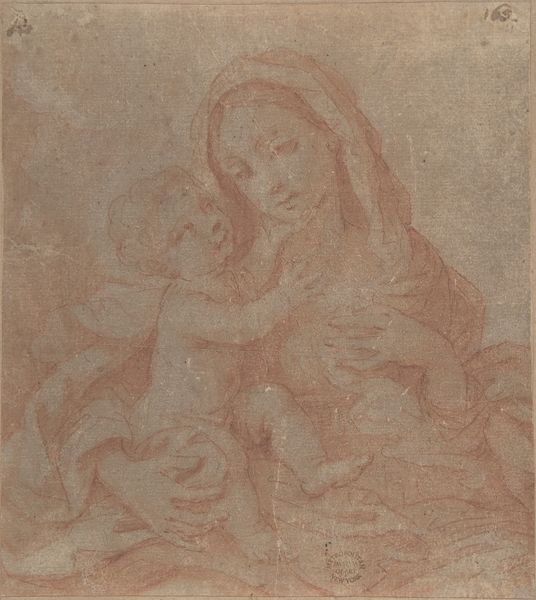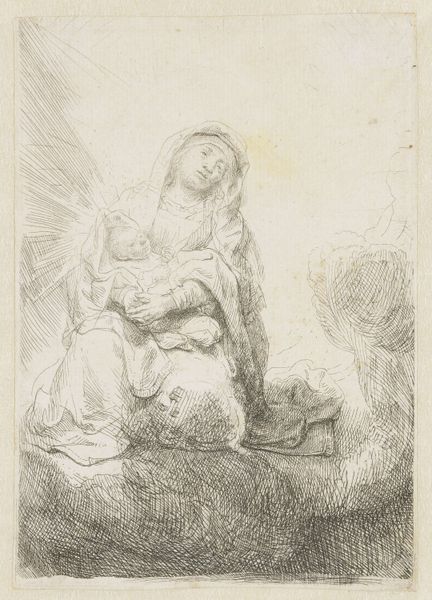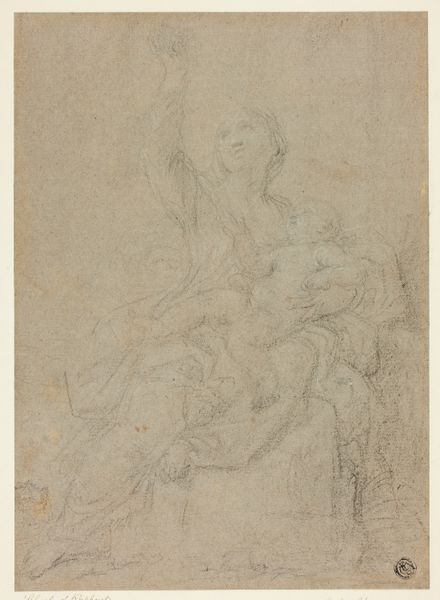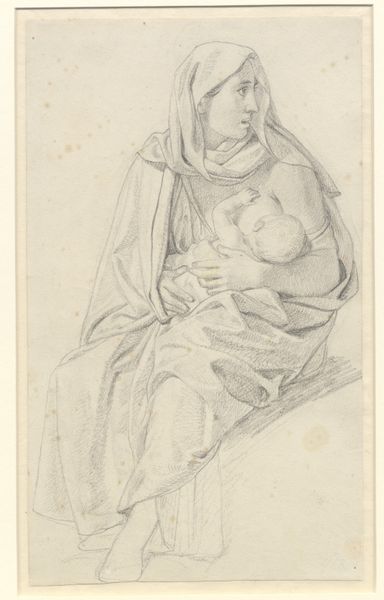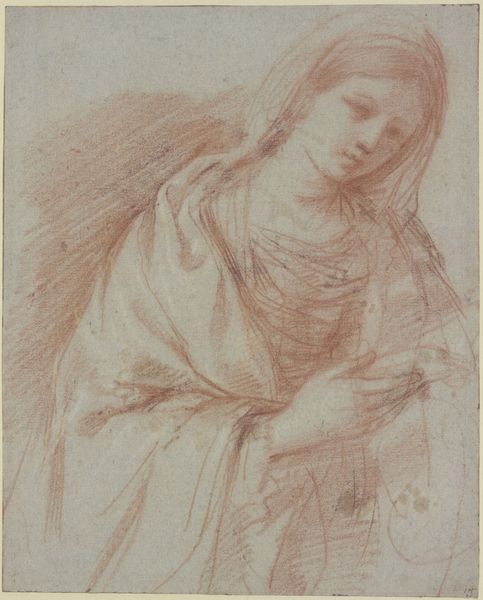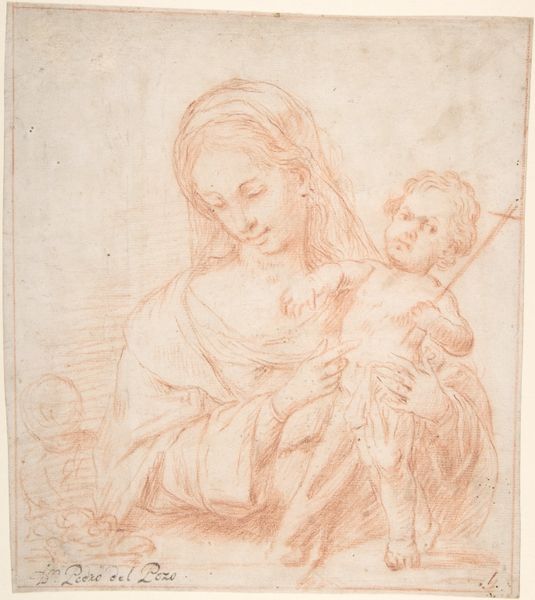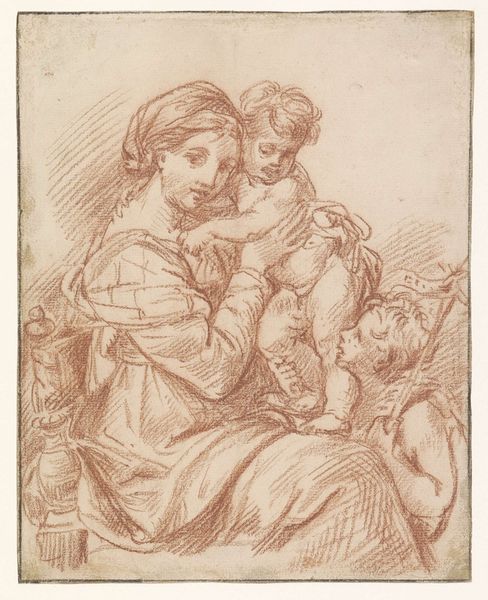
Seated Woman with a Child on her Lap (Study for a Mystic Marriage of St. Catherine of Alexandria) 1710 - 1776
0:00
0:00
drawing, print, pencil
#
portrait
#
pencil drawn
#
drawing
# print
#
pencil sketch
#
11_renaissance
#
pencil drawing
#
pencil
#
portrait drawing
Dimensions: 20 1/4 x 15 15/16 in. (51.5 x 40.5 cm)
Copyright: Public Domain
Curator: Before us is a drawing by Etienne Parrocel, dating from sometime between 1710 and 1776, titled "Seated Woman with a Child on her Lap (Study for a Mystic Marriage of St. Catherine of Alexandria)." It’s a pencil drawing, currently held at The Metropolitan Museum of Art. Editor: There’s a tenderness to this sketch that really draws you in. The soft shading, the intimate poses… it feels very human, very approachable despite its religious context. Curator: Absolutely. Consider the materiality: Parrocel uses the pencil in a way that softens the figures, almost blurring the lines between them. The study shows a distinct preparatory process for what might be a much bigger and complex altarpiece or a devotional work destined for a chapel or private collection. Editor: It’s intriguing how the other faces are almost like ghosts hovering nearby. How do you think the drawing being a 'study’ rather than a 'finished piece’ impacted its reception through time? How has it lived in the Museum’s holdings versus a church, where it appears it was first imagined for? Curator: Good question! A work such as this gains relevance through public engagement in a space like the Met, becoming less of a liturgical element and more an object of art appreciation, sparking questions around the artist's technique or the societal values. Editor: The flowing lines of her robes and the weight of the child – that is so carefully rendered by Parrocel through the strategic build-up of lines. One also imagines the texture of the paper. You get a real sense of Parrocel's process, the physical act of sketching, of developing the idea with his hands. Curator: I agree completely. What started perhaps as a religious undertaking ends up as material for dialogue around artistic practice. And how, regardless of Parrocel’s intent, the work achieves a different social life when transferred and displayed within a museum. Editor: Precisely. It all makes you think about how artworks adapt and transform, taking on entirely different meanings, once they enter into different material or institutional frameworks. Curator: A wonderful illustration, I think, of how artistic intentions and materials gain new relevance when seen and consumed within diverse contexts.
Comments
No comments
Be the first to comment and join the conversation on the ultimate creative platform.
